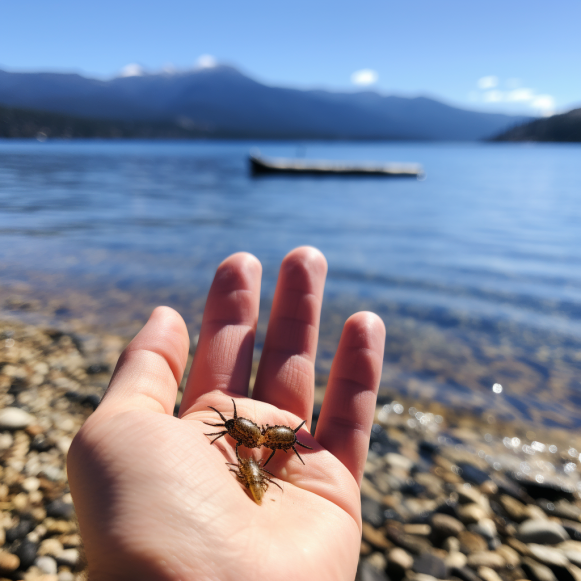Invasive New Zealand mudsnails found in Lake Tahoe

Dense populations of the minuscule aquatic creatures can displace and out-compete native species
SOUTH LAKE TAHOE — They’re tiny, live in interesting shells with whorls and grooves, and don’t require males to reproduce.
They’ve also spread across North America, far from their native land in the South Pacific, including rivers and lakes all the way up and down California, and were finally spotted this month in one of the state’s natural treasures.
According to state officials, the New Zealand mudsnail, a minuscule but “highly problematic” invasive aquatic species, is threatening to rapidly reproduce and could eventually starve out other wildlife in Lake Tahoe.
Divers tasked with monitoring the body of water for invasive species discovered New Zealand mudsnails for the first time on Thursday, according to the California Department of Fish and Wildlife. Although the creatures are usually less than 10 millimeters long, dense populations can displace and outcompete native species.
According to the CDFW, the snails have been linked to decreased populations of aquatic insects such as mayflies and stoneflies, which are important food sources for salmon and trout.
“This is a significant detection, and one we’re treating with the utmost seriousness and urgency to determine the extent of the infestation and prevent any further spread within the Lake Tahoe watershed,” said Colin Purdy, environmental program manager for CDFW’s North Central Region, which includes the California portion of Lake Tahoe and the surrounding areas of Placer and El Dorado counties.
According to the CDFW, once New Zealand mudsnails have established themselves in a new habitat, they are impossible to eradicate without causing harm to other parts of the ecosystem.
“Besides being really tiny, they can grow into large numbers when they invade a lake,” said Sudeep Chandra, a limnology professor at the University of Nevada, Reno. “We should consider how quickly they can spread around the lake and what, if any, impacts they may have on the actual ecological system.”
Chandra, who co-authored a 2012 paper on the potential effects of the New Zealand mudsnail in uninvaded Western waters, explained that the snail’s ability to reproduce through parthenogenesis, which essentially allows females to reproduce clones of themselves if conditions are favorable, is a unique feature of the snail. According to him, this can lead to rapid growth of mudsnail populations.
So, what can be done to keep the species in check? Anglers, boaters, visitors, and residents should “clean, drain, and dry” all recreational and fishing gear, including freezing waders for at least six hours, leaving all water, debris, and organic plant matter at the body of water before leaving, and never transporting any live fish or other aquatic plants or animals from one body of water to another, according to the CDFW.
Brendan Burnside, owner of Tahoe Fly Fishing Outfitters in South Lake Tahoe, said Friday that he isn’t worried about the mudsnails yet because there isn’t evidence that the species has spread to nearby bodies of water. When renters return waders and boots to his shop, he says they are always thoroughly cleaned with bleach and other solutions.
The first step in controlling the mudsnail population, according to Chandra, is determining the extent of their distribution. According to preliminary surveys, they’ve been spotted in a two-to-three mile radius on the Lake’s south shore.
“To me, that’s concerning in the area of control,” he said. “I believe this is the reason for bringing in a group of experts to see if we can control them.”
The CDFW stated that its scientists are developing and implementing plans to sample bodies of water throughout the Tahoe Basin in order to better define the snails’ geographic range. While no snails have been discovered in nearby bodies of water, they have been discovered in lakes and rivers across California and neighboring states.
According to the CDFW, the snails were first discovered in North America in Idaho’s Snake River in 1987, and then in California’s Owens River in 2000. They are thought to have been introduced via live fish shipments and spread through recreational activities.
More information on mudsnails and other invasive species can be found at: https://wildlife.ca.gov/Conservation/Invasives.






